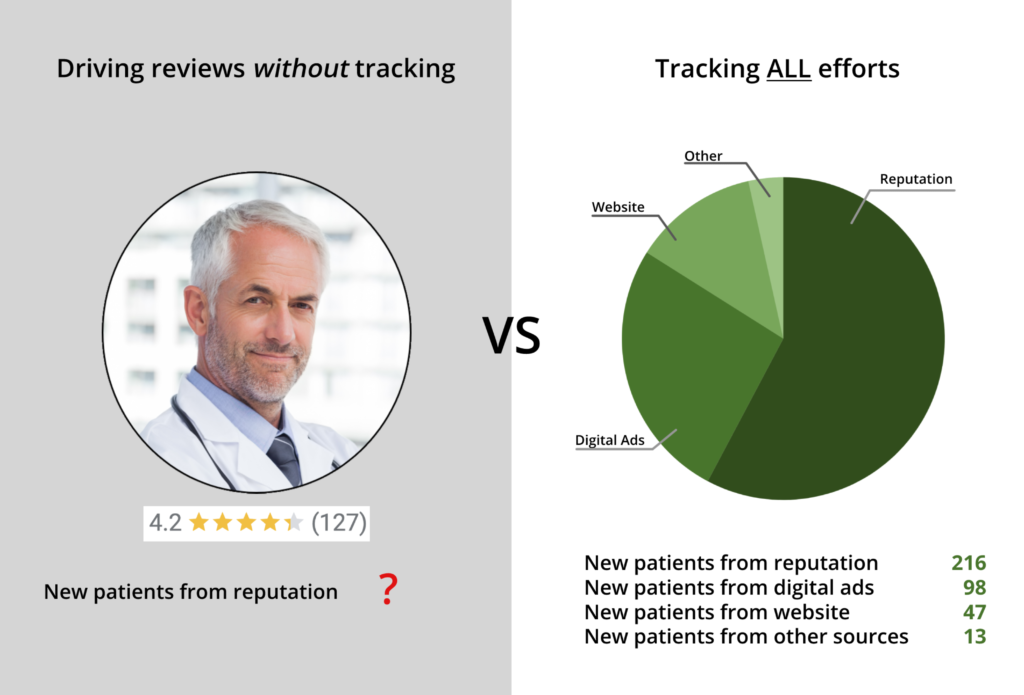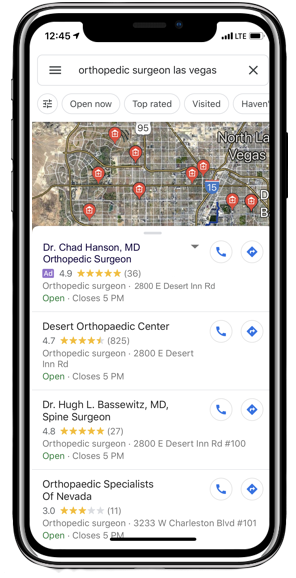Healthcare digital marketing has evolved—is your practice keeping up?
Healthcare marketing is known for lagging behind traditional marketing in order to keep patient information safe. Sensitive PHI cannot be treated the same as information trails left by digital consumers. Doctors have a responsibility to protect the privacy of their patients, and for that reason, healthcare marketers’ hands have been effectively tied when it comes to cutting-edge tactics.
The good news is that technology has advanced enough to allow us to employ these effective tactics AND keep patient information safe. The right software can integrate with the PM/EHR systems and perform those critical functions within the security walls already in place. That deep integration allows healthcare marketers to access patient information without violating HIPAA regulations or compromising patient security.
What does that mean for healthcare digital marketing? First, it means healthcare organizations have the resources to make informed marketing decisions based on data. And second, it means that as important as reputation management is, it’s not the only game in town anymore.
To get more patients and build your practice, you need to move beyond one-dimensional marketing and employ these four healthcare digital marketing essentials: Measure results to make data-driven marketing decisions, manage your online reputation and visibility, identify high-value patients with predictive analytics, and target the right patients with paid advertising.
Measure results to make data-driven marketing decisions.
 Integration with a healthcare PM system allows a marketing platform to have secure access to patient data. The software works behind security barriers to gather and interpret needed information so healthcare marketers know exactly which of their efforts resulted in getting new patients. That’s powerful information.
Integration with a healthcare PM system allows a marketing platform to have secure access to patient data. The software works behind security barriers to gather and interpret needed information so healthcare marketers know exactly which of their efforts resulted in getting new patients. That’s powerful information.
Let’s examine what it looks like to focus on reviews without tracking versus tracking all marketing activities by comparing two hypothetical practices:
Driving reviews without tracking
Practice A has 20 physicians and 5 offices in a large metropolitan area. Their doctor reputations aren’t very good, so they decide to focus on managing their online reputations. They start seeing ratings go up with more reviews. Their doctors love it, and the marketing team notices they’re getting more new patients. More reviews and improved reputations seem to be getting them more patients, but since they aren’t tracking that, they aren’t sure. However, their doctors are happy with their improved reputations.
Tracking all marketing activities
Practice B has 25 doctors in 5 locations, and they want to expand. They start using a software platform that integrates with their PM. The software makes improving their reputation simple, and they are also sending digital ads to high-value patients and tracking their results. They are soon able to see which of their marketing efforts drive patient acquisition.
With that data in hand, unlike practice A’s reactionary approach, practice B sees which of their marketing activities have the best return on investment (ROI) and are able to make tactical, data-backed decisions. They turn up the volume on high-performing efforts and drop what isn’t working well. They are able to get the new patients they need to build their business, they know where those patients come from, and they’re saving marketing budget in the process. Plus, they know that every dollar they spend is working efficiently to acquire more patients.
Call trackers are key
How did practice B get all that great data that allowed them to be successful? An integrated healthcare marketing platform with the right tools in place can track calls down to the patient name. Practices can put call trackers on their GBP listing, paid ads, website, or other marketing channels. When a call comes in, the software connects the dots to see if the caller schedules an appointment and whether they are a new or existing patient.

If you know how many patients scheduled an appointment from your Google profiles, a particular ad, or another channel, and you know your costs associated with each action, you can easily derive your patient acquisition cost and ROI. From there, it’s easy to see where you should put your dollars to work so they are most effective. Measuring conversion to track patient acquisition is the first building block when it comes to putting healthcare digital marketing essentials in place. The second is improving your online reputation and visibility.
Manage your online reputation and visibility.
Medical consumers looking for a new doctor turn to reviews as a first step in their process 71% of the time. They look for a doctor with a high star rating and authentic reviews on Google, Healthgrades, and other review sites. If they find a doctor with a lower rating, they often keep looking.
It’s important to both show up and look good to consumers who need a doctor, and that means capturing a spot—or multiple spots—on the first page of search results. You can do that by taking a few simple actions:
Own and optimize your Google Business Profiles (GBP).
Google profiles are free advertising for your practice, and they get a lot of traffic. Someone searching on Google for a business—or a doctor—nearby, will see the top three GBPs Google finds relevant to their search, a “map pack” of three profiles. Google tries to give the person the best three options to fit what they’re looking for, and you have a higher chance of hitting those top three results by optimizing your listing. Nurturing your profiles shows Google that you’re playing their game and keeps you relevant.
Get your Google rating and reviews in shape. 
You need a great star rating on Google for two main reasons: One, it’s important to look good so that potential patients know that you provide great care. Two, getting a steady stream of reviews shows Google that people are interacting with your profiles, improving your likelihood of showing up in search results. Since the vast majority of searches start on Google, it’s the first place to look when you want to manage your reputation. Outside of showing up in search results, it’s important that your online reputation accurately reflects the high level of care you offer, and the more reviews you get, the more accurate your rating will be.
Even though Google matters most, it’s a good idea to funnel reviews to Healthgrades, Vitals, and other platforms as well, because you want to look good no matter where people look for reviews.
Make sure your website looks good.
Your website should look good visually, but to “look good” to Google’s bots it needs to be stuffed with keywords medical consumers use. If a patient is searching for you by your practice name or one of your doctor’s names, you will show up. But you also want to show up for people who are searching for medical care who are not searching for you specifically. Great keyword use, good content on your website, and photos will get you seen.
Protect your brand.
When someone searches for your practice or one of your doctors by name, you should be the top result they see. However, some competitors could be using your practice or doctors as keywords and show up on top of organic results with an ad. You can trump that by using your practice and doctors as keywords in your own ad. And since you own the keywords, in a sense, the ads will not be very expensive for you.
The point in taking these simple actions is to improve your visibility and make sure your reputation reflects the excellent care you provide. It’s one of the four healthcare digital marketing essentials you don’t want to miss. Improving your reputation should definitely be a part of your healthcare marketing plan.
Identify high-value patients using predictive analytics.
All patients are important, but not all patients bring the same rate of return. You know which procedures you’d rather be performing and which ones bring in the most revenue. A platform that integrates with your PM and has the right tools in place can safely comb through your patient data to form profiles of your most profitable patients.
For example, the software may find that patients who are likely to need a knee replacement have a specific list of characteristics in common such as age range, economic status, hobbies, geographic areas, similar internet searches, etc. Lookalike audiences are created from information found within the safety of your PM and de-identified to keep patient info secure. Then predictive analytics tools can sift through vast banks of data to identify similar individuals who are likely to need a knee replacement soon.
Targeting these individuals will boost your revenue by keeping your schedules filled with patients who bring the most value.
Target the right patients with paid advertising.
With high-value patients identified, you can set up paid ads targeting  them. Ads are important because of the way search results display. Searchers will see the top three Google profiles as well as websites and other organic content. They will also see paid ads on top of all the other results. And when your priority is getting seen (visibility) grabbing those top positions with ads is very valuable.
them. Ads are important because of the way search results display. Searchers will see the top three Google profiles as well as websites and other organic content. They will also see paid ads on top of all the other results. And when your priority is getting seen (visibility) grabbing those top positions with ads is very valuable.
Think of it this way, if you’re not putting ads in the top positions in search results, someone else is, and they will be seen above you in results regardless of how great your reputation is. Some practices are doing this so well that they grab several of the top spots. In the phone above, the ad for Dr Hanson shows up at the top, and then two of the three GBPs listed are for the same practice (check out the addresses). That’s prime real estate!
These top four healthcare digital marketing essentials are the best place to start when you want to secure your independence, build your practice, or just get more patients. Don’t settle for one-dimensional marketing by focusing solely on reputation management.
If you would like more information on any of these healthcare marketing essentials, please call one of our experts at 801-304-3155 to set up a 15-minute conversation.











